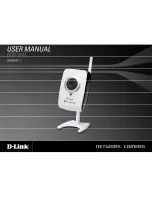
19
Circuit Description
Description, Specifications, Installation, Operation, and Service Manual
Federal Signal
www.fedsig.com
known to be grounded. For pole mounted installations, drive a metal rod or bar at
least two feet (61 cm) into the ground, or as close as practical to the base of the pole.
For maximum protection, use a separate, continuous 10 AWG or larger wire from the
siren frame to ground and the cabinet of each control device to ground.
Pre-operation Checkout
After the siren has been completely installed, perform the following checks before putting
the siren into service.
The output level of a siren is capable of causing severe hearing discomfort
or permanent hearing damage. Therefore, ALWAYS wear hearing protection
when performing tests or maintenance on the siren.
• Make sure that all air intakes and sound outlets are not obstructed.
• For local test activation see the FC, FCH, and FCU Models manual part number
255294.
• Check the operation of the control circuitry by initiating one or more signals from the
FC Controller.
After the installation is complete and it has been established that the siren is operating
properly, Federal Signal recommends that all control devices be padlocked to discourage
tampering and vandalism.
Circuit Description
The Model RC2W is used to operate a Model 2 Siren.
The RC2W is a motor starter that switches the power to the Model 2 siren. The RC2W
requires a siren controller to provide Steady and Wail type siren signals typically used
for warning applications. The siren controller will hold a contact closed to activate the
RC2W for a Steady signal and will cycle the contact open and closed to create a Wail
signal. The RC2W also provides overload protection for the siren motor.
As shown in Figures 5 and 6, the motor starter includes an overload relay. The relay
protects the motor starter and the motor in the event that excess current is drawn. The
overload relay is activated when there is sufficient current through one or more of its
heaters to cause the heater(s) to expand enough to open the relay contacts. The opening
of the relay contacts opens the motor starter control circuit. As a result, the motor starter
de-energizes, protecting the circuit against damage. After the motor starter de-energizes,
the relay contacts reset automatically when the heater(s) cools sufficiently. The overload
relay can also be reset manually after approximately one minute.










































